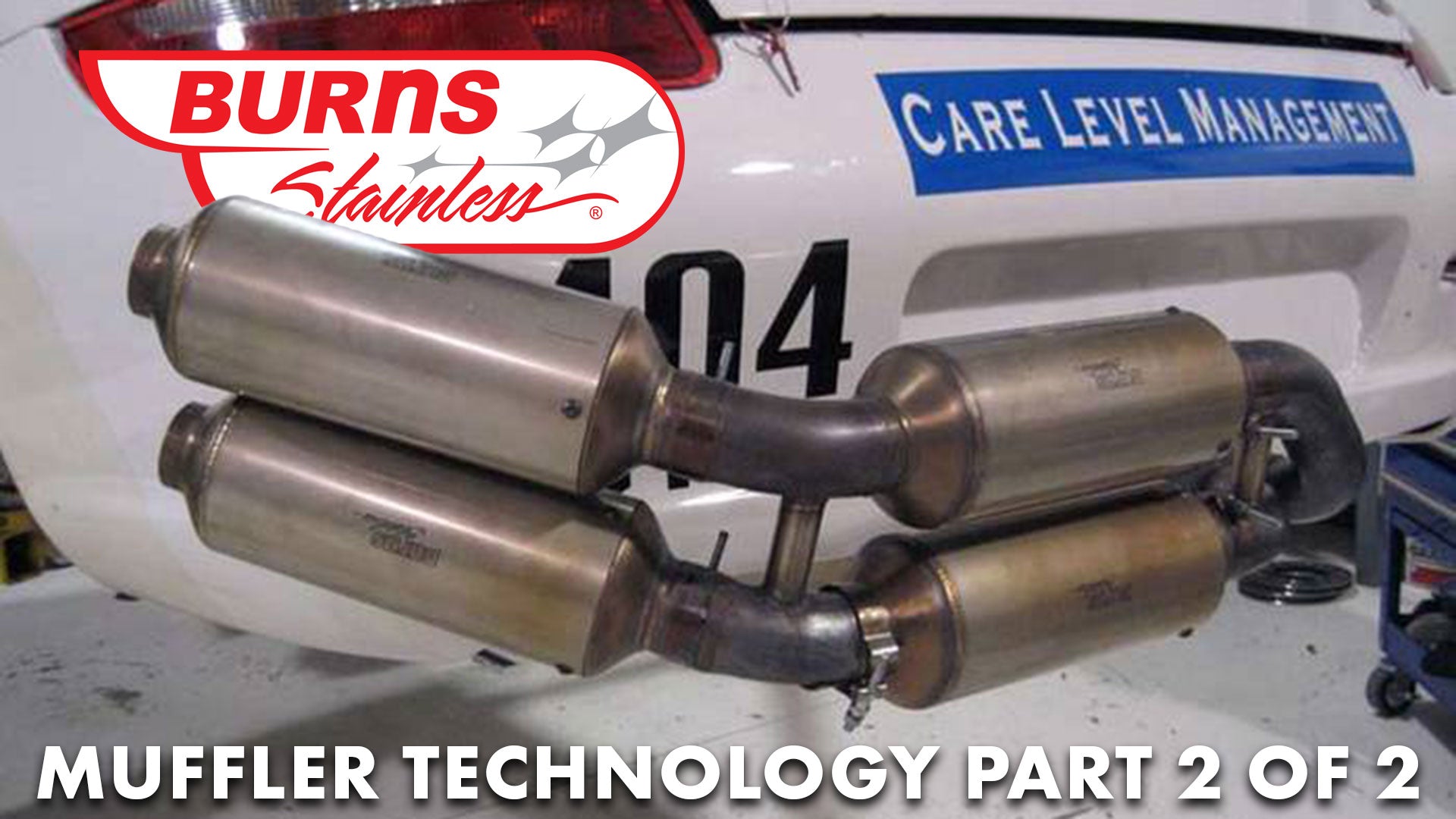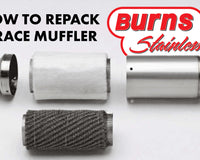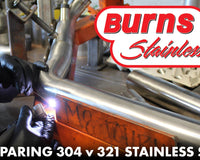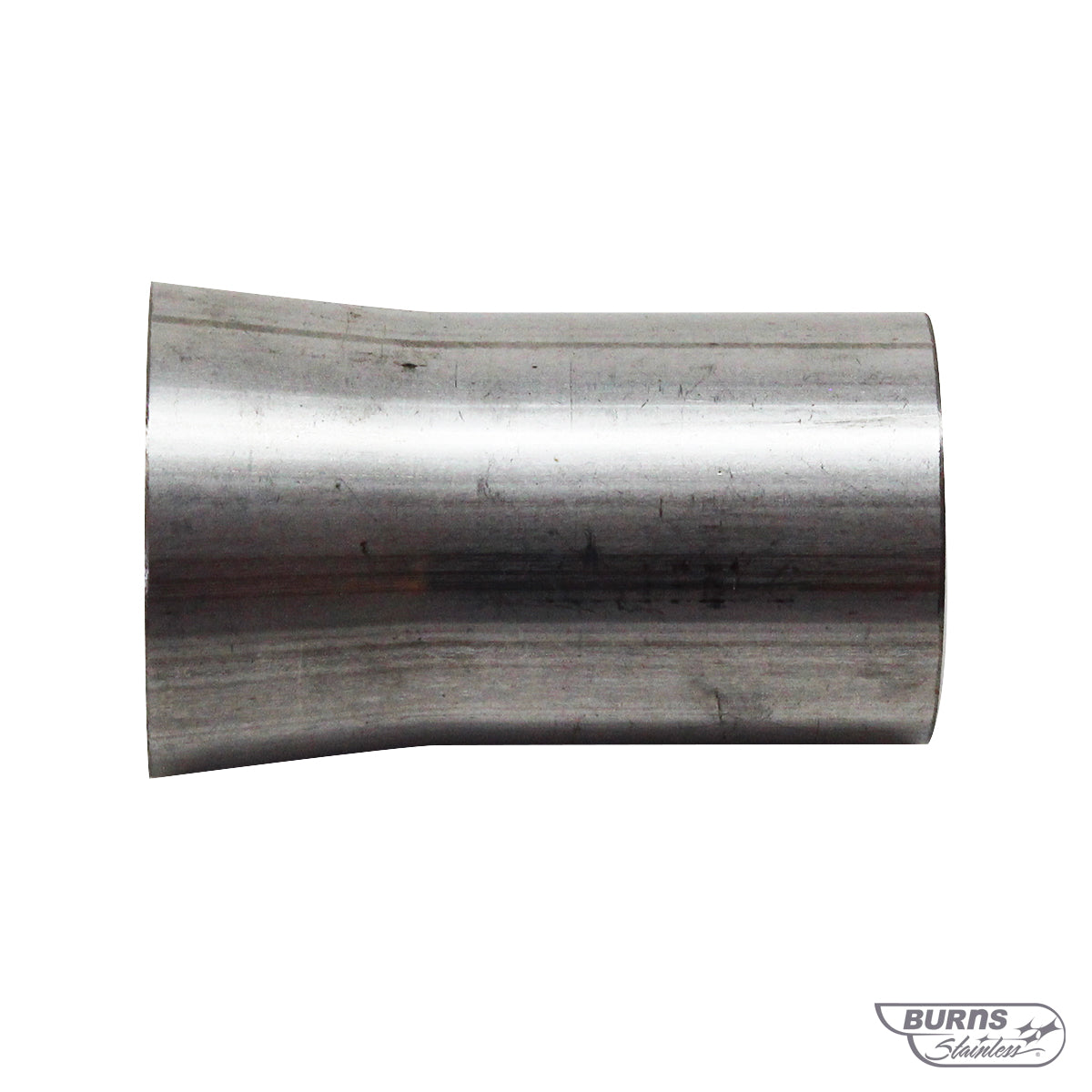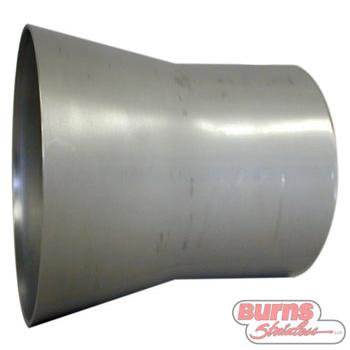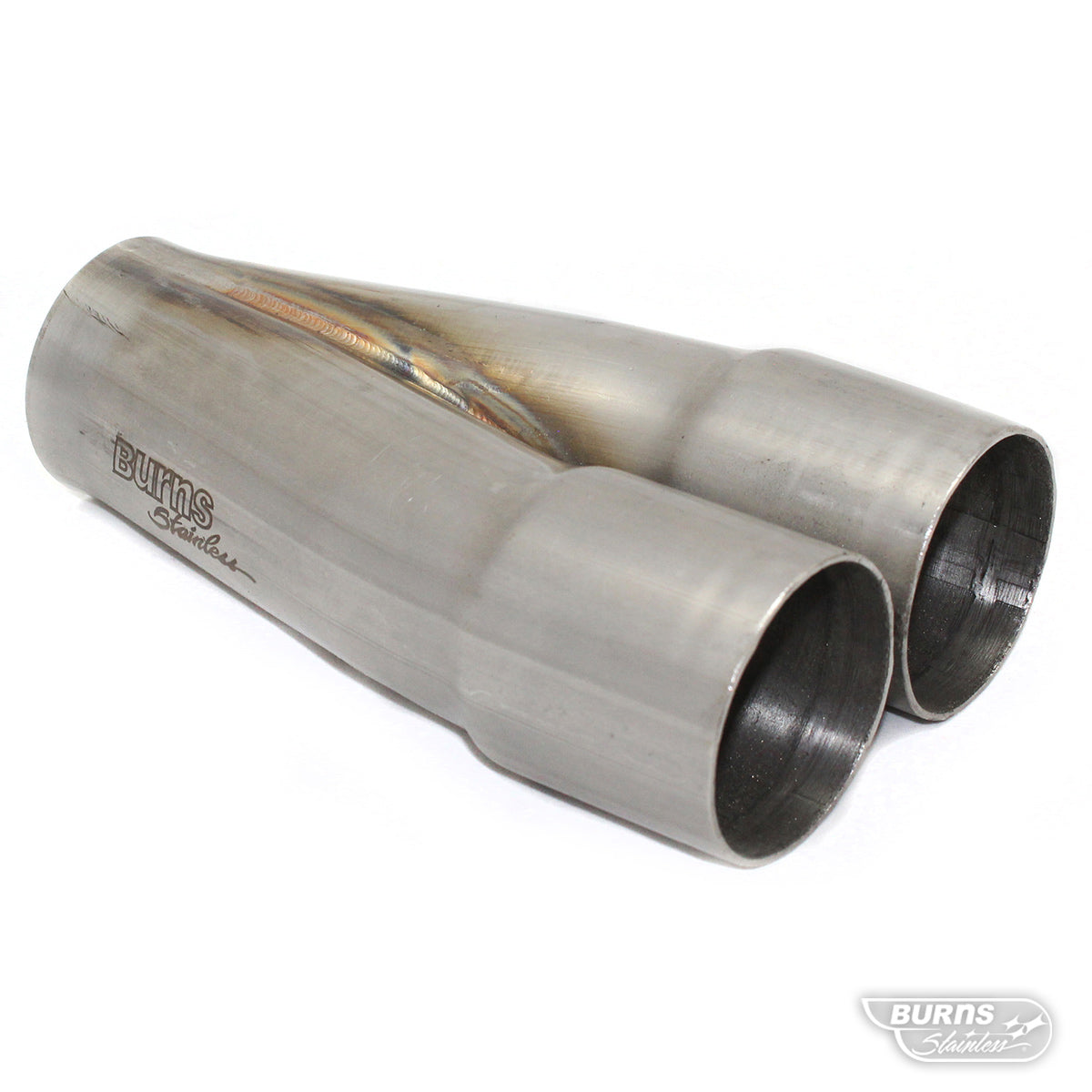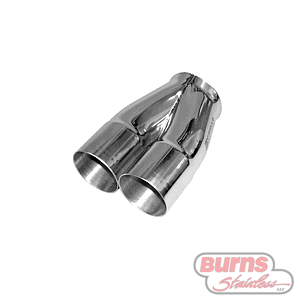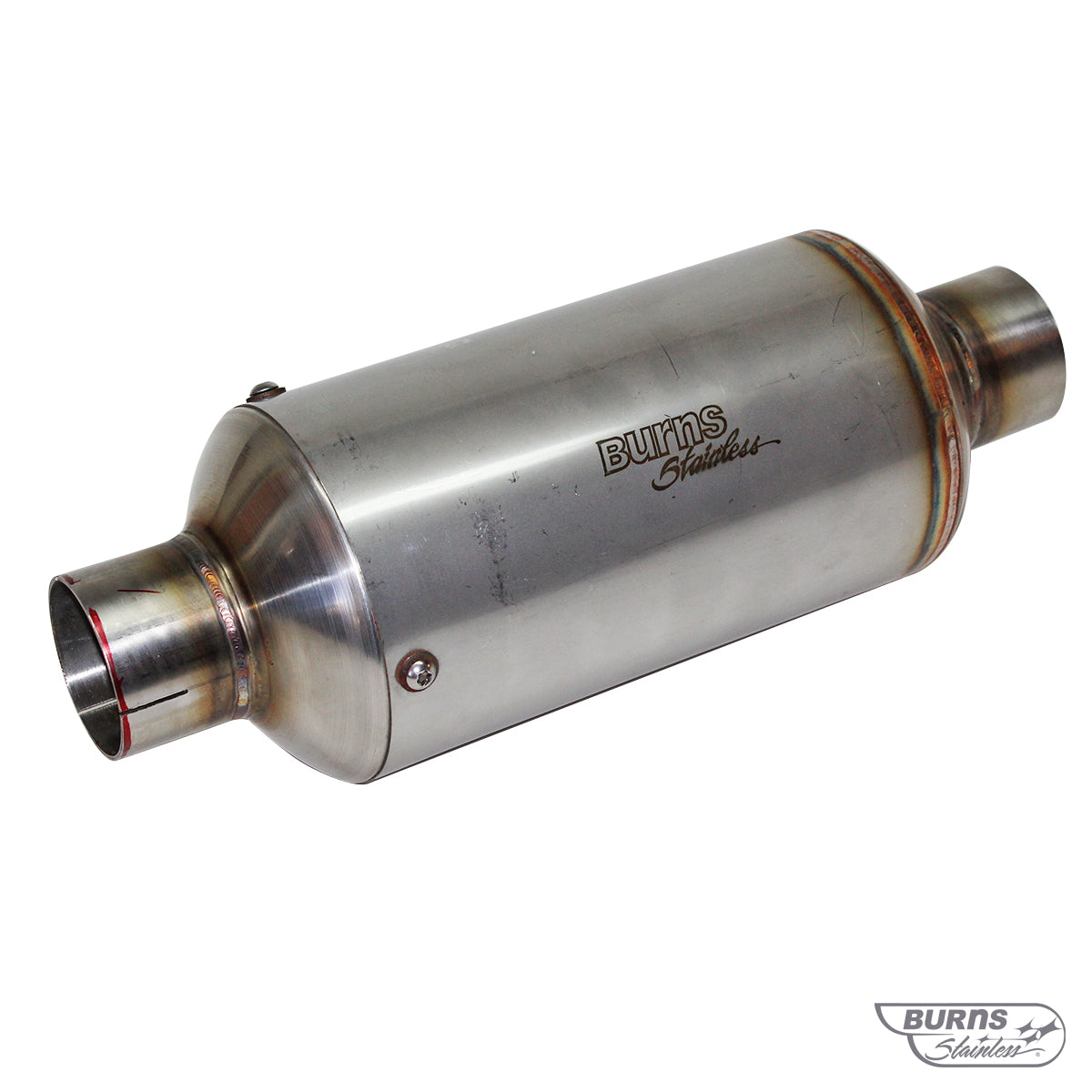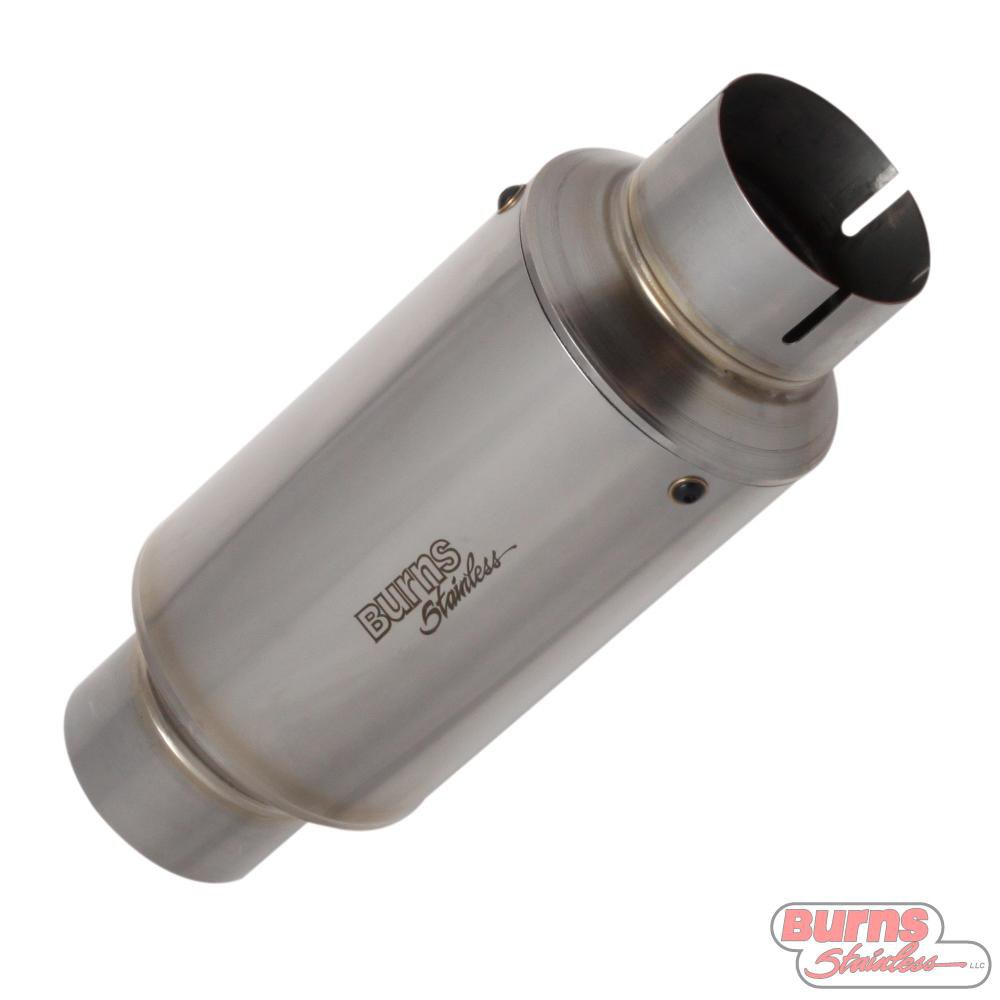Muffler Technology – Part 2 Sound Reducing Technology

In the last newsletter, I discussed sound and sound level measurements as related to motorsports. Since then, I have learned of additional tracks that have instituted sound rules including the drag strip at Fontana Speedway. And if you ask me, I cannot imagine why anyone would complain of noise there (Figure 1)! The sound level at Fontana is reported to be 82 dB, 10 dB lower than at Laguna Seca! And we’ve seen some wild muffler setups to meet sound at Laguna (Figure 2). So how does one reduce the sound from a 1,800-hp turbo drag car to 82 dB? Good question!

It turns out that the measurement at Fontana is being made at the property line located approximately 500’ from the track, whereas the 92dB limit at Laguna is measured at 60’ (Figure 3). As we learned last time, the sound level in dB drops by 6 dB each time the distance is doubled. Therefore, 82 dB at 500’ is equivalent to approximately 103 dB at 60’. So it is actually quite a bit more liberal than Laguna Seca. Finally some good news.
So, what technologies are available to reduce the sound from a racecar? As mentioned, the loudest source of noise from a racecar is the exhaust followed by intake and mechanical noise. A muffler is a device that is used to reduce the sound from the exhaust and was first patented by Milton Reeves in 1897. Reeves was an early pioneer in the auto industry and built some of the first cars built in America (Figure 4). He was very concerned with “matters of vibration, odor/vapor, exhaust-and other [problems] too numerous to mention" and is credited to being the first to use a muffler. The design was a very simple open chamber that was thought to trap the sound waves.

Modern muffler designs use three basic technologies, singularly or in combination, to silence automotive exhausts. The three technologies are absorptive, passive-reactive, and active-reactive. The first two are the most prevalent and many OE-style silencers incorporate both methods. An absorptive silencer (Figure 5) uses a porous sound-absorptive packing material such as fiberglass to reduce sound by converting sound energy into heat. These are commonly referred to as glass-packs and are the most common muffler design used in performance and racing applications. This muffler design is essentially a low-pass filter which attenuates sounds in the higher frequencies and produces the deep, throaty sound that many associate with a high performance engine. This design is commonly used for performance applications as they normally have little resistance to flow. A common design is a cylindrical can with a perforated tube surrounded by packing material.

Reactive mufflers (Figure 6) use the sound waves themselves to actually cancel out particular sound frequencies. Typical reactive muffler designs utilize tuned elements such as tubes and baffles to reflect the sound waves in such a way as to cancel specific frequencies. ¼-wave resonators and Helmholtz chambers are frequently used and will be discussed further in the next installment of this series. A common example of a reactive muffler is the Flowmaster chambered muffler. Reactive mufflers tend to attenuate low frequency sounds. A drawback to reactive mufflers is the fact that the baffling used can be restrictive to flow and the wave reflections can affect the gas exchange process of the engine – i.e. affect the tune of the engine.

Active-reactive mufflers (Figure 7) utilize a sound generating source such as a speaker to produce sound waves that will cancel the noise from the engine. Typically, a microphone upstream of the muffler will measure the sound waves which are transmitted to an electronic processor that then sends a signal to the speaker that plays a sound that cancels the engine noise. This is essentially the same technology used in the Bose noise cancelling headphones that you may have seen advertised. The technology works great with headphones, but the power needed to reduce the sound from an engine is considerable. I heard one of these systems at the SEMA show a few years ago, and it seemed to work well in the demonstration, but have yet to see any widespread use.

Most OE mufflers (Figure 8) are designed with a combination of reactive and absorptive components. Since the mufflers are designed with a specific vehicle/engine combination, the engineers can incorporate discrete components to cancel out specific sound frequencies to obtain the noise-vibration-harshness (NVH) objectives for the car. Auto manufacturers put a lot of effort and resources to attain NVH objectives. It is important that a Mercedes sounds like a Mercedes and a Lexus sounds like a Lexus. In fact, even Ferrari has developed an engine sound chamber where the cars are tested and mufflers, intakes, catalysts, and tailpipes are tweaked in order to achieve the proper Ferrari sound.

The Burns Stainless Ultralight Muffler is an absorption-style muffler (Figure 9). It is comprised of a 0.035” thick perforated tube (core) captured within a larger diameter stainless steel case with end caps, also 0.035” wall. The core is designed to float within the case in order to alleviate thermal stresses due to the high temperature exhaust gases. The core is wrapped in a packing material that provides the sound attenuation. Burns currently uses three types of packing: High temperature fiberglass (glasmat) is standard; stainless steel scrubble is used for extreme applications and a special stainless steel woven mesh for very extreme applications like racing rotaries. The glasmat is the least extensive and lightest packing material and provides the best sound attenuation.
Read up on how to repack a muffler from a previous article of ours.
These absorption style mufflers work best if kept packed. Burnt-out packing material will not only be louder, it can actually cause a loss in performance due to the change of tune. The packed muffler will become a reactive muffler and may attenuate frequencies that will affect the tune. Many motorcycle race teams will actually weigh their bike mufflers between races to insure that they contain proper packing.

